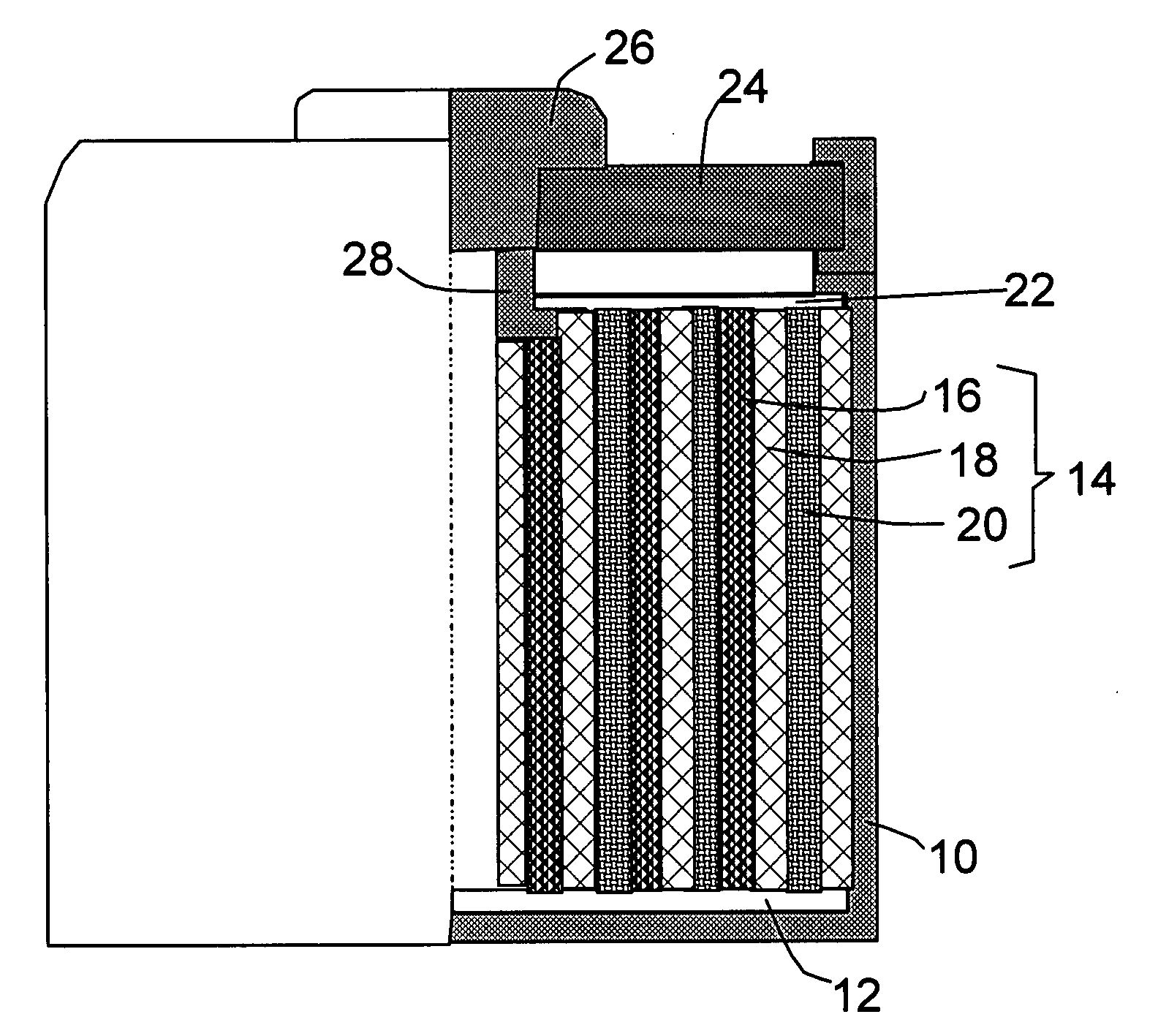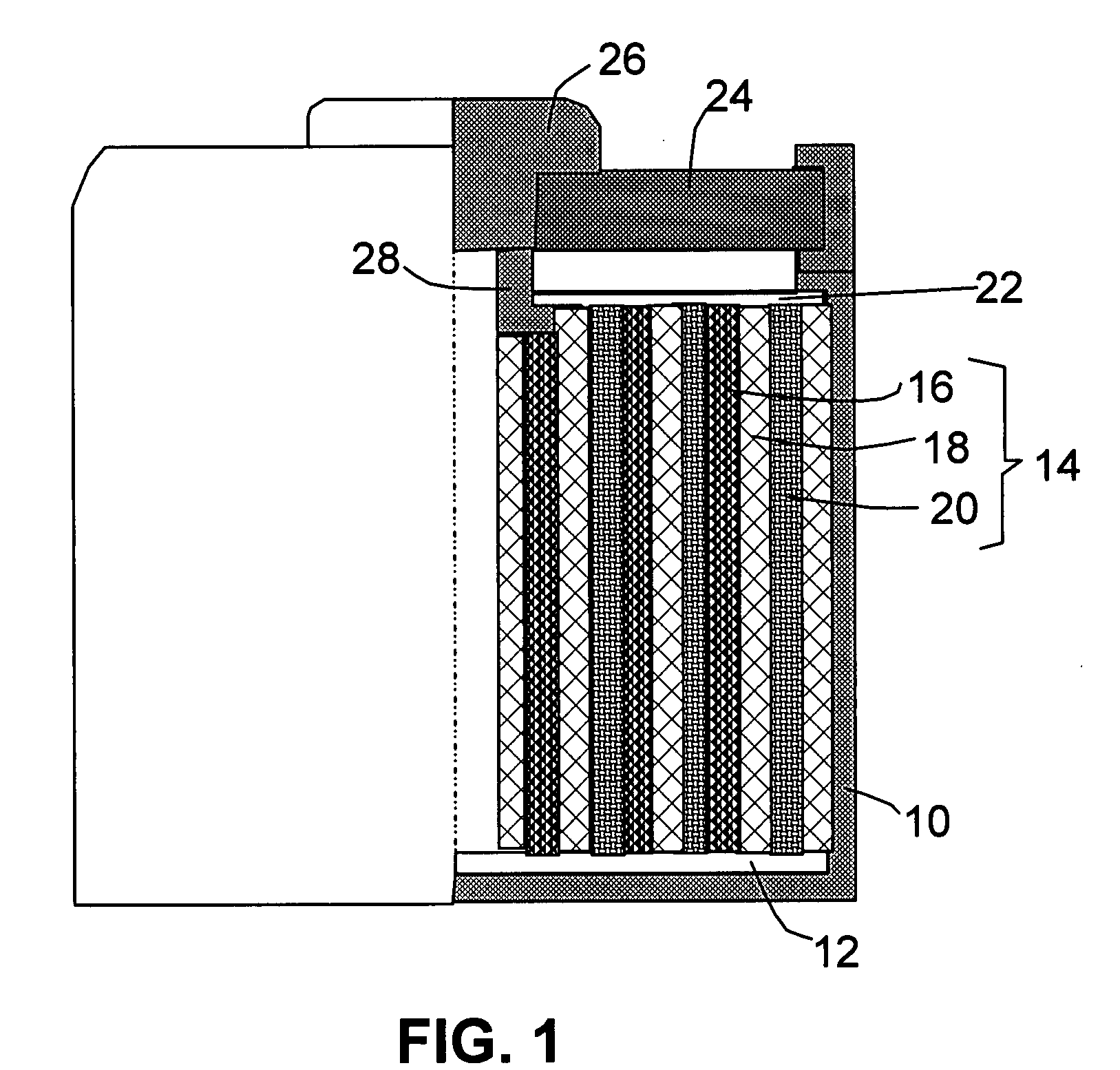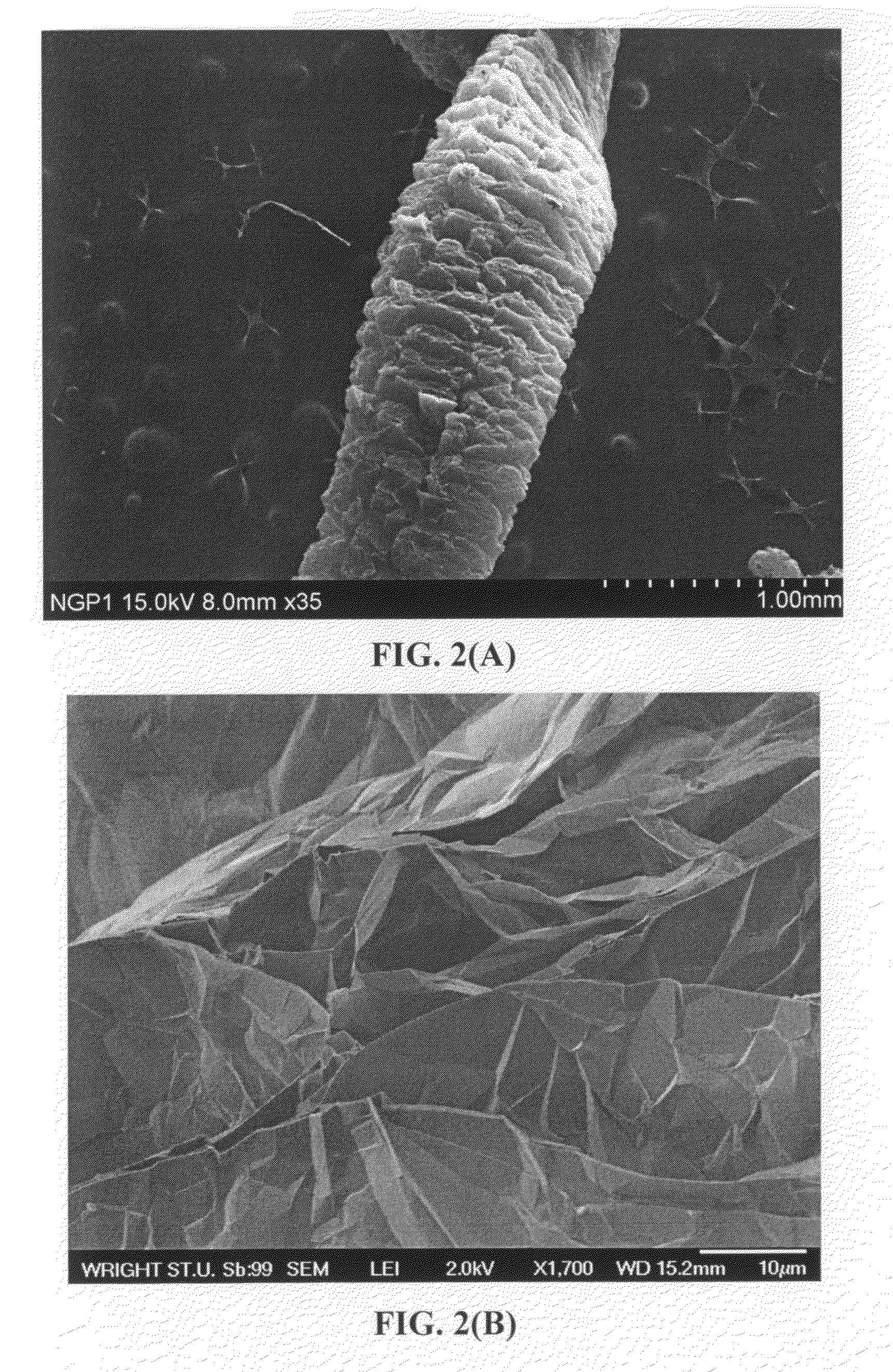Hybrid anode compositions for lithium ion batteries
- Summary
- Abstract
- Description
- Claims
- Application Information
AI Technical Summary
Benefits of technology
Problems solved by technology
Method used
Image
Examples
example 1
Samples 1a, 1b and Comparative Samples 1a, 1b
[0110]Natural flake graphite, nominally sized at 45 μm, provided by Asbury Carbons (405 Old Main St., Asbury, N.J. 08802, USA) was milled to reduce the size to approximately 14 μm (Sample 1). The chemicals used in the present study, including fuming nitric acid (>90%), sulfuric acid (95-98%), potassium chlorate (98%), and hydrochloric acid (37%), were purchased from Sigma-Aldrich and used as received.
[0111]A reaction flask containing a magnetic stir bar was charged with sulfuric acid (360 mL) and nitric acid (180 mL) and cooled by immersion in an ice bath. The acid mixture was stirred and allowed to cool for 15 min, and graphite (20 g) was added under vigorous stirring to avoid agglomeration. After the graphite powder was well dispersed, potassium chlorate (110 g) was added slowly over 15 min to avoid sudden increases in temperature. The reaction flask was loosely capped to allow evolution of gas from the reaction mixture, which was stirr...
example 2
Samples 2a-2e and Comparative Samples 2a-2e
[0118]Graphite worms for Samples 2a, 2b, 2c, 2d, and 2e were prepared according to the same procedure used for Sample 1, but the starting graphite materials were highly oriented pyrolytic graphite (HOPG), graphite fiber (Amoco P-100 graphitized carbon fiber), graphitic carbon nano-fiber (Pyrograph-III from Applied Science, Inc., Cedaville, Ohio), spheroidal graphite (HuaDong Graphite, QinDao, China), and meso-carbon micro-beads (MCMBs) (MCMB 2528, Osaka Gas Company, Japan), respectively. These four types of laminar graphite materials were intercalated and exfoliated under similar conditions as in Sample 1.
[0119]The corresponding electrochemically active particles for these samples include materials derived from metal oxides of the type MO or MO2, where M=Sn, Pb, Ge, Si, or Cd. The active materials may be prepared according to the following steps: (1) stanous oxide (SnO) powder and lithium nitride (Li3N) powder were mixed in a stoichiometric...
example 3
Samples 3a-3c and Comparative Samples 3a-3c
[0123]Additional graphite intercalation compound (GIC) was prepared by intercalation and oxidation of natural graphite flakes (original size of 200 mesh, from Huadong Graphite Co., Pingdu, China, milled to approximately 15 μm, referred to as Sample 3a) with sulfuric acid, sodium nitrate, and potassium permanganate according to the method of Hummers [U.S. Pat. No. 2,798,878, Jul. 9, 1957]. In this example, for every 1 gram of graphite, we used a mixture of 22 ml of concentrated sulfuric acid, 2.8 grams of potassium permanganate, and 0.5 grams of sodium nitrate. The graphite flakes were immersed in the mixture solution and the reaction time was approximately one hour at 30° C. It is important to caution that potassium permanganate should be gradually added to sulfuric acid in a well-controlled manner to avoid overheat and other safety issues. Upon completion of the reaction, the mixture was poured into deionized water and filtered. The sample...
PUM
 Login to View More
Login to View More Abstract
Description
Claims
Application Information
 Login to View More
Login to View More - R&D
- Intellectual Property
- Life Sciences
- Materials
- Tech Scout
- Unparalleled Data Quality
- Higher Quality Content
- 60% Fewer Hallucinations
Browse by: Latest US Patents, China's latest patents, Technical Efficacy Thesaurus, Application Domain, Technology Topic, Popular Technical Reports.
© 2025 PatSnap. All rights reserved.Legal|Privacy policy|Modern Slavery Act Transparency Statement|Sitemap|About US| Contact US: help@patsnap.com



